Hiptage benghalensis (Madhavi lata) As a folk medicine, its leaves and bark, which are hot, acrid, bitter, insecticidal and vulnerary, are used (leaf paste) to treat skin diseases, to heal wounds, biliousness, Ulcers, and to treat cough (bark decoction), asthma and leprosy. Bark powder with honey is also useful in treatment of diabetes.
Hiptage benghalensis (Madhavi lata)
Did you know that Hiptage benghalensis, a herbal plant native to India, which in Hindu religious beliefs popularly known as Madhavi lata, clung to her lover and master Lord Krishna who symbolized the mango tree?
The Hiptage benghalensis, often simply called Hiptage, native to India (also native to South East Asia and the Philippines) as 'Madhavi lata' bearing attractive and fragrant flowers, has religious connotation in Hinduism linked to Lord Krishna's stories, is herbal plant with many uses in folk medicine.
Hiptage, a herbal plant, widely cultivated in the tropics, is stout, a woody high climber liana (vine) or large shrub,with fragrant yellow-white flowers and 3-winged wind dispersed seeds. Its leaves are lanceolate to ovate-lanceolate and approximately 20 cm (8 in) long,and 9 cm broad, ; petioles are up to 1 cm long. It has scandent branches upto 5 m high. Its flowers intermittently during the year, and produces fragrant flowers borne in compact ten to thrity flowered ailiiary racemes. The flowers are pink to white, with yellow marks. Fruits are samaras with three spreading, peppery oblanceolate to elliptic wings, 2-5 cm long and propogate via wind or by cuttings. It prefers climates ranging from warm temperate to tropical. it grows from sea level to 1,000 m. Hiptage is also cultivated for its scented flowers. The plant can be trimmed to form a small tree or shrub or can be trained as a vine. It is also occasionally cultivated for medicinal purposes in the alternative medicine practice Ayurveda.
Hiptage, is derived from the Greek hiptamai, which means "to fly" and refers its unique three-winged fruit known as "samara"which has three wings with the middle wing larger than the adjoining two wings, and is thus known in English as Helicopter Flower. "Benghalensis" is derived from the historic region of Bengal, where it is a native species. Hiptage. benghalensis, in the family of Malpighiaceae, has 21 species. Its important Phyto constituents are: Hiptagine, alkaloid, phenol, tannins, flavonoids, and steroids.
Popular in English usage simpl,y as Hiptage or Helicopter Flower, its vernacular names in India are: Bhramarotsava, Bhumimandapa, Madhavilata, Malati, Vasanti in Sanskrit; Madhabi lata or madhoi lata in Assamese; Adaraganjee hambu (vine), Vasnatha Dhoothi (ವಸಂತದೂತಿ) Madhavi Lathe (ಮಾಧವೀಲತೆ), Chandravalli (ಚಂದ್ರವಳ್ಳಿ) in Kannada; Madhumalati in Hindi; Chittilakody, Njarambodal, Pongapoo, Seethambu, Sitampu in Malyalam; Vasantakaala malligaim, Adigandi, Adimattam, Atikam, Atikamali, Atikamalikkoti in Tamil; Adavi puttangi, Athimutamu, Atimutamu, Bandi guriginja in Telugu; and Haladvel, Madhavlata, Madhumaalathi in Marathi.
In Hinduism's religious beliefs, the Madhavi lata is compared to a frail young beatiful woman who clings for support to her lord and master Krishna who is symbolised by the strong mango tree. Thus, In stories of Lord Krishna, Madhavi Latha is found everywhere in Brindavan, and craetes a wondeful atmposphere with its fragrances and the three coloured flowers. In ancient India's greatest poet and playwright Kalidasa's play Abhijanashakuntala (The Sign of Shakuntala), the heroine Shakuntala meets king Dushyanta and falls in love with her. Kanva rishi, Shakuntala's foster father was pleased that she had met man of her choice, had said: "He had for long, been loking for a handsome mango tree (referring obviously to Dushyanta) and that now he would give his Madavai Lata a.k.a. Sakuntala to him in marriage". According to Vishnu Purana, Madhavi (Goddess Lakshmi) is the wife of Vishnu as Madhava, and the plant is named after her. Symbolically, Madhavi Lata is the creeping vine and Vishnu is the tree round which she clings for support. The herbal plant's three coloured flower is one of the 21 type of flowers offered to Lord Ganesha during Puja.
As a folk medicine, its leaves and bark, which are hot, acrid, bitter, insecticidal and vulnerary, are used (leaf paste) to treat skin diseases, to heal wounds, biliousness, Ulcers, and to treat cough (bark decoction), asthma and leprosy. Bark powder with honey is also useful in treatment of diabetes.
- Narasipur Char
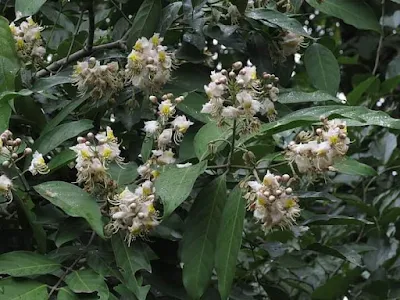

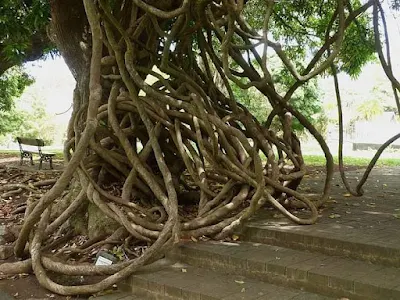
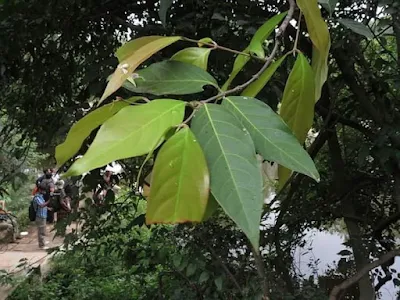
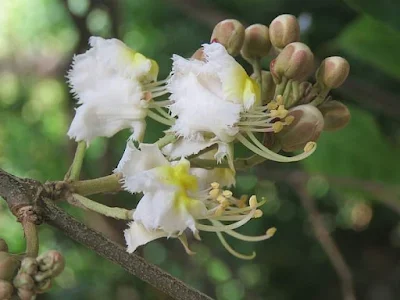
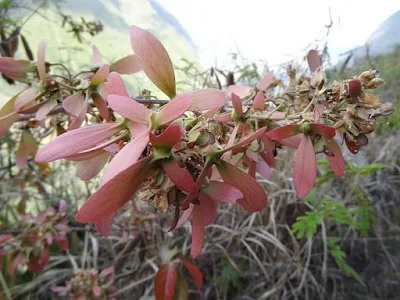
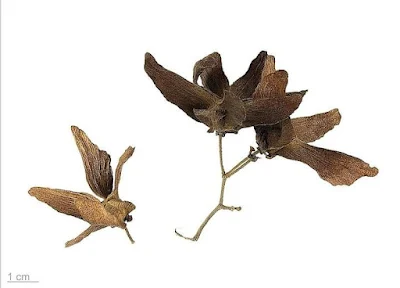
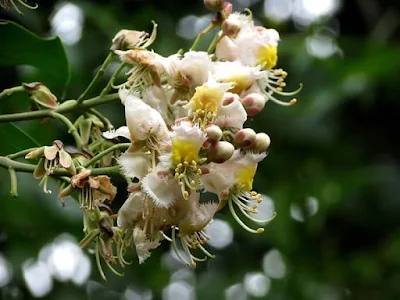





















Comments
Post a Comment